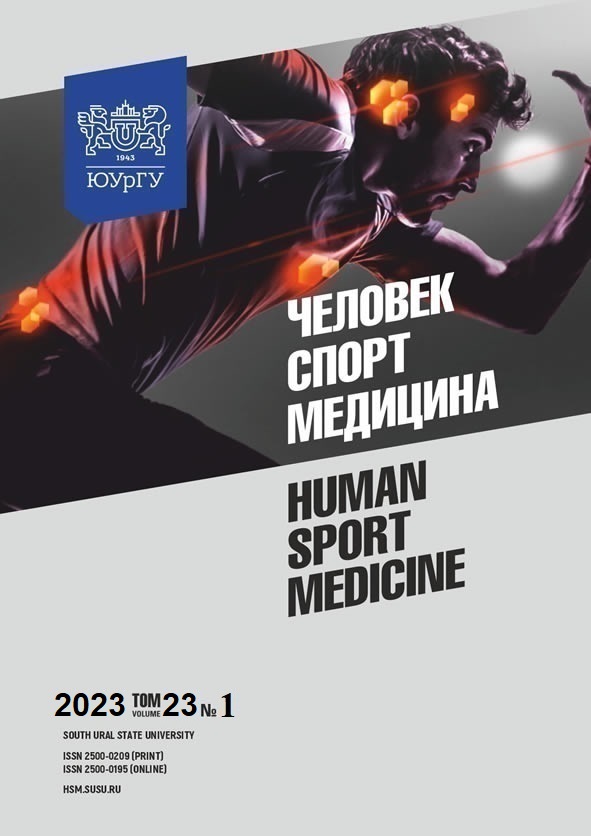EVALUATION OF THE REGULATORY MECHANISMS OF THE AUTONOMIC NERVOUS SYSTEM OF RUGBY PLAYERS BASED ON THE FUNCTIONAL STATUS OF THE CARDIOVASCULAR SYSTEM DURING THE POST-COMPETITIVE PERIOD
Abstract
Aim. The paper aims to evaluate the regulatory mechanisms of the central nervous system of rugby players based on the functional status of the cardiovascular system. Materials and methods. Hemodynamic parameters and the stress index were measured in rugby players of the rugby-7 male team in the post-competitive period. Results. It was found that, in the post-competitive period, the sympathetic nervous system was dominant in the regulation of performance. Sympathetic influence and centralization of heart rate control can serve as a physiological marker of fatigue development. Cardiovascular examination showed that average hemodynamic measurements were within the limits of age and physiological norms.
In 28.6% of young men, the results obtained showed a tendency to arterial hypertension, as evidenced by the average values of SBP = 143.75 ± 2.9, while DBP = 77.5 ± 0.8 corresponded to the physiological norm, PP = 66.25 ± 3.5. PP above the physiological norm may indicate a change in the functional capabilities of the left ventricle, followed by its hypertrophy as a result of remodeling, which provides effective adaptation to physical exertion. Conclusion. The coach should constantly evaluate the physiological status of athletes during training and competition to identify heart rate and hemodynamic changes in the cardiovascular system and, thus, prevent the development of overtraining syndrome.
References
References on translit
Copyright (c) 2023 Human. Sport. Medicine

This work is licensed under a Creative Commons Attribution-NonCommercial-NoDerivatives 4.0 International License.















